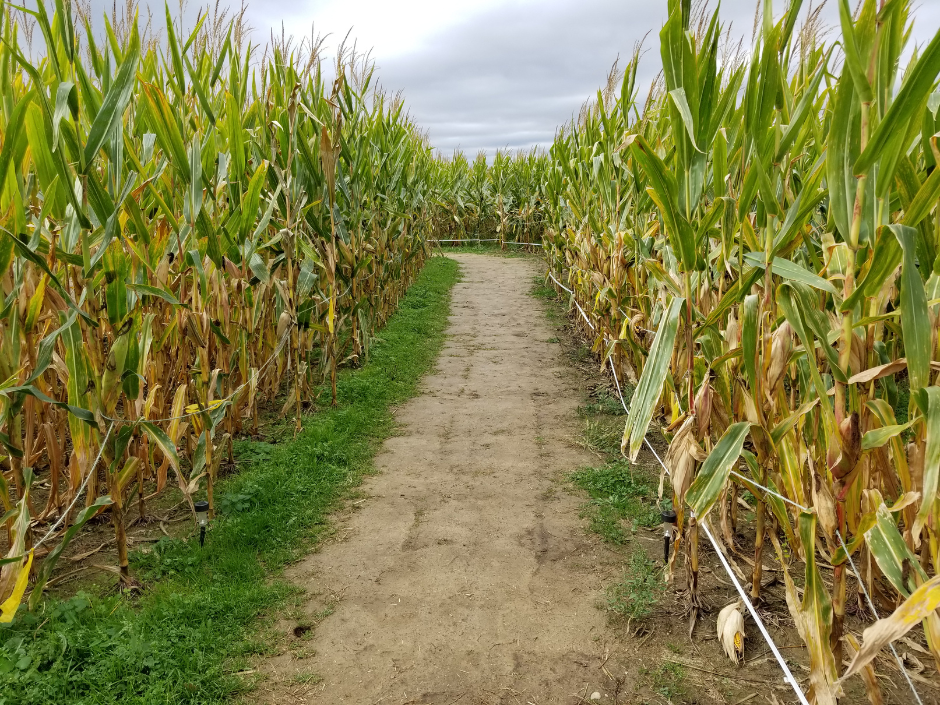Step back in time and learn the fascinating history of corn mazes! From ancient rituals to family fun on the farm, discover why visiting lush labyrinths has become a favorite activity around the world. Plus, go behind the scenes and learn how mazes have evolved with the help of modern technology!
The History of Labyrinths and Mazes — a Brief Overview
The history of mazes dates back thousands of years. Ancient Greeks and Romans and medieval monks used them as puzzles and games. The word “labyrinth” comes from the Greek word labrys, which means “double-headed axe.”
The most famous labyrinth in Greek mythology was the one King Minos of Crete built for his wife, Pasiphae, to hide her affair with a bull. The “Minotaur,” half man, half bull, was born from their union. The Minotaur lived in the maze’s center and ate anyone who couldn’t find their way out.
In ancient Egypt, several mythological labyrinths were associated with Ra, who was said to have built them as traps for evil spirits. Many Egyptians also believed some to be entrances to other worlds or heavens where gods could descend. In addition to these mythological labyrinths, real-life labyrinths were thought to have healing powers because they contained holy water at their centers.
The Corn Maze Origin Story — Who Invented Them and Why?
So, how did labyrinths with mythical origins become beloved fall family attractions? Enter the corn maze!
Earl Beal created the first full-size corn maze in Annville, Pennsylvania, in 1993. Beal’s original design was inspired by his father’s work designing mazes for a local amusement park called Knoebels Amusement Resort. He wanted to share this experience with others, so he created a large-scale version of the maze at his farm in Pennsylvania.
The original design featured three paths that converged into one at the center — not unlike today’s modern-day techniques! Beal’s plan also included a tractor ride through the center pathway.
Come be part of the history of corn mazes here in North Carolina!
Visit Kersey Valley’s Maize Adventure to make unforgettable family memories!
How are Corn Mazes Created Today? Technology’s Impact on Corn Maze History
Have you ever wondered, “how do they make corn mazes?” While farmers created corn mazes of the past with a plow or tractor, today’s mazes use GPS technology to wow guests with more intricate designs.
Attractions like Kersey Valley Maize Adventure used to use GPS-enabled tractors to cut the paths out of grown corn. Today, the maze is planted by GPS. Corn is planted in rows, and when the planter reaches a selected pathway, it omits a seed and then continues planting. This technology has transformed the maze industry for the better. Benefits include:
- More eco-friendly operations
- More time for staff to learn the maze routes
- More elaborate challenges for maze-goers
- No need for a tractor to plow paths from the corn
The Popularity of Corn Mazes Today and into the Future
Today, fairs, festivals, and other events across the country boast corn mazes to draw visitors. In addition, farms, haunted houses like Spooky Woods, and other businesses have begun to incorporate them as unique attractions for customers. Mazes have grown significantly in popularity over the years, and the trend doesn’t show signs of slowing down anytime soon!
Are you ready to visit a top-rated corn maze attraction? Kersey Valley Attractions is a one-stop, year-round adventure park in Archdale/High Point. Don’t miss the Maize Adventure corn maze every fall!
While you’re here, experience zip lines, axe throwing, a rock wall, and so much more!
Skip the line!
Click here for more information & book your advance Maize Adventure tickets!


